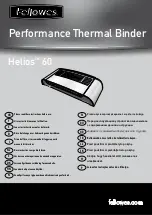
G3 FACSIMILE COMMUNICATIONS
5–20
4.3.3 Structure of image signals in MR coding scheme
Fig. 5-17 shows the image signals when parameter K is 2.
Fig. 5-17 Image Signal Structure in MR Coding Scheme
(in case of parameter K = 2)
As can be seen from this figure, the coding scheme applied to each line is
shown by “additional” bits after EOL of the previous line. EOL+0 located
at the end of the scanline shows that MR coding is used on the next line.
EOL+1 shows that MH coding is used on the next line.
In the same way as MH coding, MR coding also is binary extracted from
code tables. However, MR coding differs from MH coding in that the
information of the run length and run color is not contained in the code
table. The code table only contains information as to how a certain line has
changed from the previous line.
4.3.4 MR coding scheme procedure
• Definition of changing pixels
Before we start explaining the coding procedure, let’s define what a
“changing pixel” is.
A “changing pixel” is defined as a pixel whose “color” (i.e., black or
white) is different from that of the previous pixel on the same line.
a0: The reference or the starting changing pixel on the coding line. At the
start of the coding line, a0 is placed on an imaginary white changing pixel
situated just before the first pixel on the line. During coding of the coding
line, the positioning of a0 is defined by the previous coding mode.
a1: The next changing pixel to the right of a0 on the coding line
a2: The next changing pixel to the right of a1 on the coding line
EOL+1
EOL+1
EOL+0
Data (MH)
Or
RTC
Data (MH)
Data (MR)
Fill
EOL+1 EOL+1 EOL+1 EOL+1 EOL+1 EOL+1
EOL+0
Data (MH)
Data (MR)
Fill
Continued to (A)
(A)
EOL+1 EOL+1 EOL+1 EOL+1 EOL+1 EOL+1
EOL+1
Data (MR)
Data (MH)
Fill
One page's worth of image signals
Structure of image signals in MR coding scheme
One line's worth
of image data
One line's worth
of image data
When final
line is MR
When final
line is MH
Image data
of final line
















































